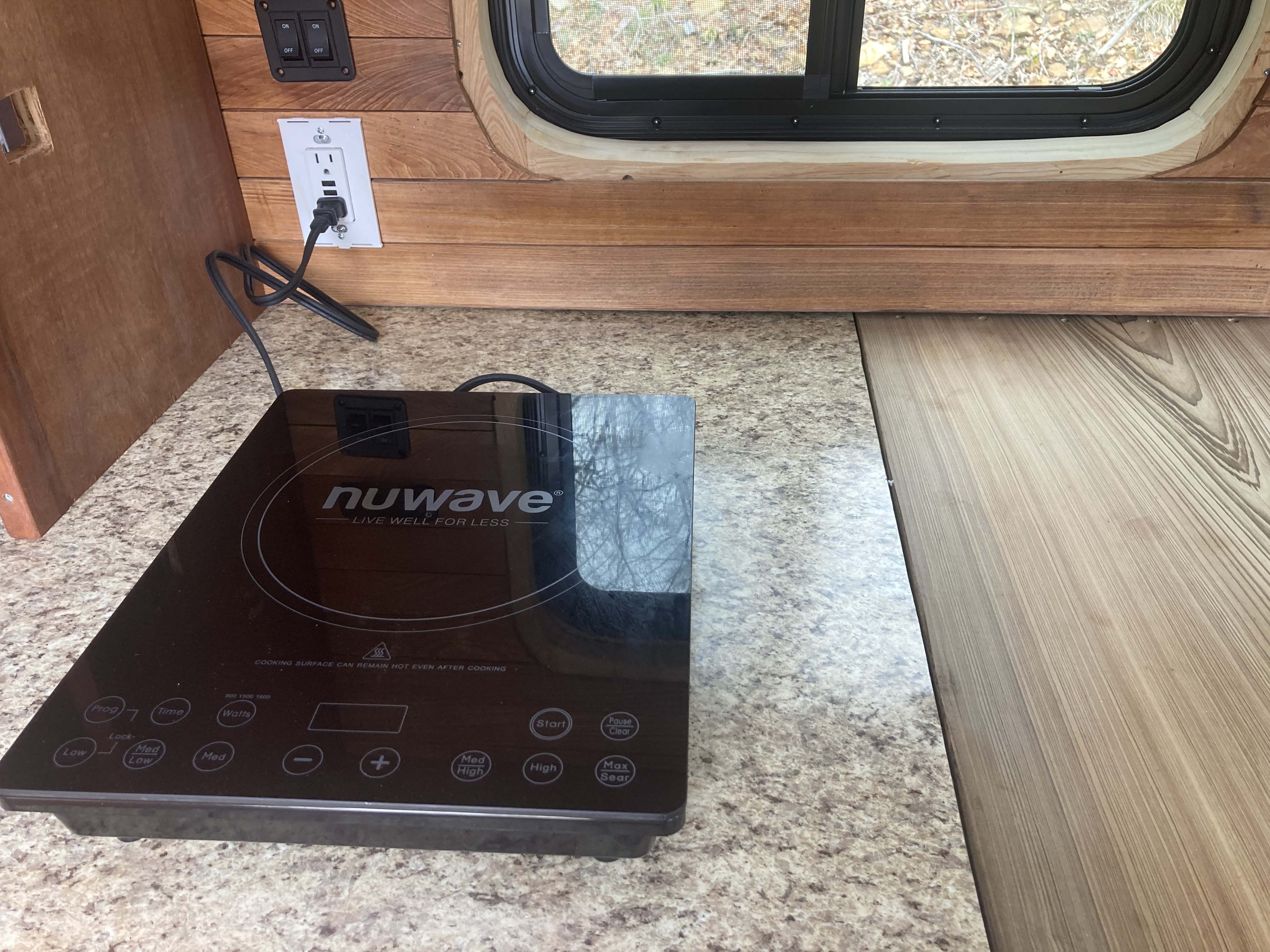Cooking Breakfast
Contact
University of Arkansas System Division of Agriculture
Cooperative Extension Service
2301 S. University Ave.
Little Rock, AR 72204

Cooking Breakfast
I am in the process of outfitting my new Dodge van into an off-grid camper. To make this work I have two big lithium-iron-phosphate batteries that provide both AC and DC power. Because I’m old and try hard to avoid discomfort, I needed the AC power to run my mini-split heater/air conditioner and brew my coffee each morning. And I needed a way to cook breakfast.
In considering the possibilities for cooking, I quickly zeroed in on an induction cooktop that is the newest, latest thing in cooking that is said to be 40 percent more energy efficient than either gas or electric. I have tried it and it works great. This little cooktop got me thinking about cooking. While I will be camping – at least in theory – the notion of cooking over an open fire seems like a possibility. But, after two summers wandering in the western states and being met almost everywhere I went with “no campfire” restrictions, that didn’t look like a good option.
Taken together, the mastery of fire and cooking are believed to one of the two early technologies – the other being beating each other over the head with clubs – that separated we humans from the rest of the animal kingdom. Fire has long been associated with humankind’s archeological records showing its presence as far back as 1.5 million years ago. But there is little agreement that the charcoal found in these ancient sites was actively being managed or just there.
A surprising amount of research is being done on Neanderthal sites and the use of fire. While not universally accepted, compelling evidence supports that these ancient modern human relatives not only cooked on fires but were able to manage and control them at least 60,000 years ago. Neanderthals went extinct about 40,000 years ago but DNA evidence supports the notion that their presence is still felt in our genome because most of us carry a few percentage points of their genetics in our chromosomes.
Not all Neanderthal sites show evidence of fire and fires were not maintained (or at least detected) during the long periods of occupancy of the sites. By studying the carbon, techniques have been developed to separate firewood that was green, dry or rotten. Anyone who has managed a fireplace or a wood stove knows that dry, standing wood makes the best firewood. The Neanderthals agreed and that was the wood of preference for them, too.
By studying dental calculus – a deposit of ancient plaque on teeth – researchers have found evidence of cooking in the form of plant microremains. Gelatinized starches derived from cooked grains from grasses are found in these calculus layers. Charred bones are also found in many Neanderthal sites.
Cooking over an open fire remained standard for a long time. Innovations such as fire-resistant pottery first appeared about 30,000 years ago; metal (copper) cooking utensils appeared about 9,500 years ago. But still cooking was over an open fire. With the industrial revolution and the invention of the Franklin stove, cooking moved into the modern era.
Since then we have seen the addition of new fuels (coal gas, acetylene, kerosene, butane, propane, methane i.e. natural gas) and with the widespread adoption of electricity, resistance heat. In the 1970s magic boxes appeared that popped great popcorn but made bread as chewy as rubber. Now we have induction cooktops and ovens that use magnetism to cook our food.
They operate by creating an electromagnetic field in a coiled copper band beneath the glass surface of the unit. This field then creates an eddy current in the metallic skin of the pan, heating the vessel. The heated vessel transfers the heat to the food being cooked. The induction cooktop itself never heats up (except when the heat from the pan transfers back to the glass cooktop). The concept was patented about 1900 but there was little interest in them until the 1970s when a couple of American companies attempted to find a market for the then-costlier units.
While they never gained much popularity here (maybe 4 percent market share), they became popular in Europe and Asia. A decade ago more than 50 Asian manufacturers began selling small, inexpensive countertop cooktops that have found ready acceptance in the van life community.
There is a bit of a learning curve when using an induction cooktop because it heats up so quickly. And my favorite aluminum omelet pan won’t work on these magnetic cooktops. The pots and pans must be magnetic to work. Government tests show induction cooking is much more efficient than gas but only marginally better than electric resistance cooking.
I conducted my own experiment boiling 16 ounces of water on the new induction cooktop (two minutes, 45 seconds); glass top electric range and propane burner (each took five minutes) and microwave (four minutes). If boiling water can be used as a measure of cooking efficiency, the induction cooktop took about 40 percent less time (and presumably energy) than gas or conventional electric cooking.
